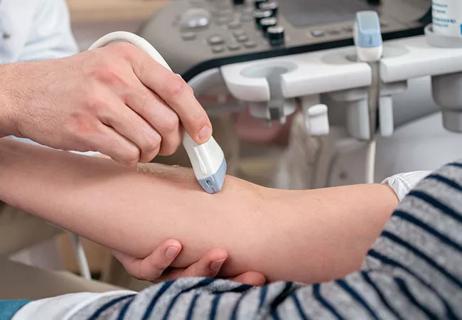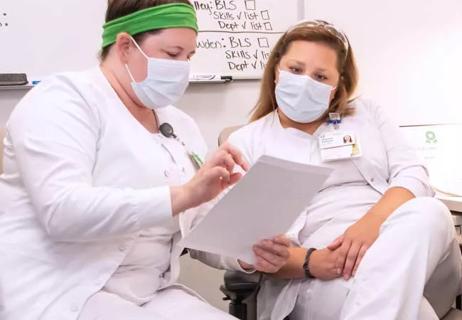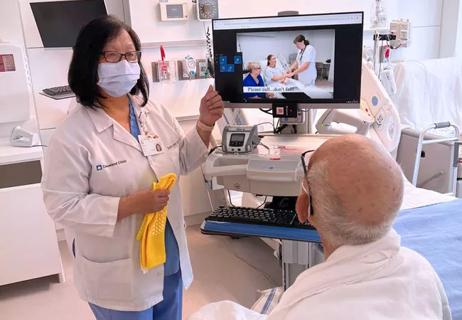Approximately 70 percent of Americans use social media, according to the Pew Research Center. They log on to Facebook, Twitter, LinkedIn, Instagram, Snapchat and other platforms to engage with people, entertain themselves, read the latest news and more. It’s not surprising, then, that the healthcare industry has begun utilizing social media for research.
“Social media use is growing, and it will be used more and more for research,” says Lee Anne Siegmund, PhD, RN, CEP, Nurse Scientist I in Cleveland Clinic’s Office of Nursing Research and Innovation, during the 2018 Nursing Research Conference in May. “It can be a valuable opportunity and venue for conducting research.”
Dr. Siegmund is currently conducting a study on Facebook that offers support and education to patients in cardiac rehabilitation. She shared her experience and advice on social media research during a breakout session at the conference.
Uses for social media in research
“For researchers who are interested in using social media in research, the two can be connected in three primary ways: Social media can be a venue for data collection, but it can also be used as a recruitment tool and as a dependent, independent or event variable,” says Dr. Siegmund.
- Venue – Social media platforms can be used as places to conduct research, including qualitative and quantitative (comparative or descriptive) studies. One of the potential advantages of social media research is mitigation of the Hawthorne effect – the alteration of participants’ behavior because of the awareness that they are being observed. “If you could collect information from subjects in their home, where they are comfortable and relaxed, patients may act more natural and your research results may be more authentic,” Dr. Siegmund explains.
- Recruitment – “Social media tools are a good way to speed up recruitment of participants, as opposed to traditional methods like sending out postcards, catching people at clinics, making phone calls, etc.,” she says. One of the biggest benefits is snowball sampling, in which participants recruit others to join the study. Another advantage to social media recruitment is heterogeneity: You may get a more diverse group of participants than if you recruited patients from one hospital or clinic, for example.
- Variable – Studies can be designed to investigate the social medium platform itself. For instance, does Pinterest or Snapchat use predict X, Y or Z? Searching the term “social media” on the U.S. National Library of Medicine’s http://www.pubmed.gov/ yields more than 18,500 articles on studies examining everything from the characteristics of nurses who use social media to utilizing social media data to monitor adverse drug reactions. In qualitative research, participants may be more comfortable saying what is really on their minds, especially if they believe they have anonymity, since the research team is blinded to them.
Obstacles related to social media research
Although social media presents unique opportunities for research, it also has challenges. Dr. Siegmund shared the following potential pitfalls:
- Recruitment issues – Some populations may be underrepresented on social media, including the elderly, people who are very sick or people who can’t afford internet access in their homes. In addition, there can be a self-selection bias, especially if recruitment is conducted online. “Many people say no to studies unless they are passionate about the topic,” says Dr. Siegmund. “I should expect that I am going to get a population sample skewed toward people who are really motivated about the topic.”
- Consent – It can be challenging to ensure that participants are who they say they are and that they understand the implications of consent. In addition to consent requirements from your healthcare organization’s institutional review board, each social media platform may have its own policies surrounding consent.
- Low literacy and understanding – This refers to both reading ability and comprehension, as well as computer literacy. One of the criteria for participation in Dr. Siegmund’s study is that participants are regular Facebook users. “I didn’t want to have to teach them how to use Facebook,” she says. Participants with low literacy may not benefit from educational or other interventions that require reading or numeracy comprehension. In addition, it could limit the use of online consent and surveys.
- Site monitoring – “One of the biggest obstacles in my study is participants receiving or giving incorrect health information or starting off-topic discussions,” says Dr. Siegmund. “Researchers must monitor their social media site carefully.” She has three administrators who keep an eye out for medical misinformation and inappropriate comments. They remove or correct anything out of line.
- Privacy issues – There is a risk not only of hackers infiltrating your study, but also of participants’ family members or friends inadvertently seeing private information on their computers or electronic devices. In addition, study participants may share each other’s personal information. Even though Dr. Siegmund’s study is a private group on Facebook, she cautions participants to carefully consider what details they post. Well-publicized issues related to data privacy and social media platforms such as Facebook highlight the risks we are currently facing.
Despite the challenges, social media offers a lot of potential for clinical researchers. As Dr. Siegmund concluded in a recent article in Clinical Nurse Specialist: The Journal for Advanced Practice Nursing, “Clinical nurse specialists can take advantage of all that social media research has to offer; and they can reach populations and affect behaviors and outcomes for patients in ways that were previously not possible.”







